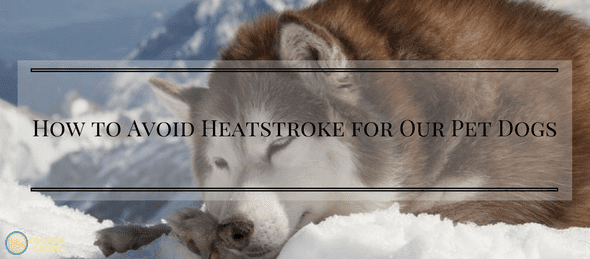Dogs
How to Avoid Heatstroke for Our Pet Dogs
With the intense heat, it is not only us humans that are vulnerable to it but also our pet animals specially the dogs. Here are some of the things you can do to avoid heatstroke. But first, what is heatstroke or hyperthermia?
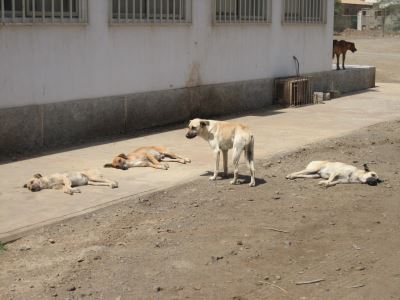
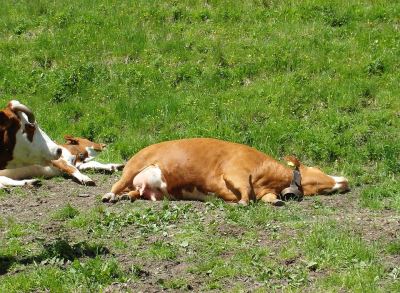
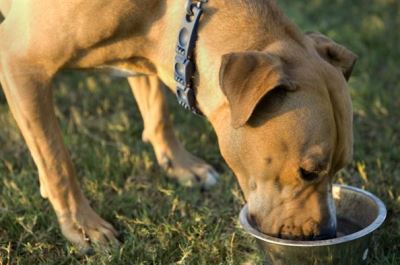
The Definition of Heatstroke
Also called hyperthermia, heatstroke is the abnormal increase of body temperature and remains above the normal. It usually occurs when someone is overexerting themselves on a hot weather. It is very common to humans, but it happens to animals, too, especially dogs. Because dogs only have sweat glands in their feet and around the nose, they are not very efficient in cooling themselves down and therefore, as a result, they rely on panting in order to keep themselves cool.
During hot days, the risk of getting heatstroke is very high. Here are some signs and symptoms of heatstroke:
Loud and excessive panting
It is normal for dogs to pant specially when they feel hot. Heavy panting is different and is a sign that your dog is dangerously overheated.
Very thick saliva and extreme thirst
Dogs with excessive and thick saliva overflowing is a sign that your dog needs hydration.
High body temperature
If your dog feels feverish or is above normal temperature, it is a sign that he needs to cool down.
Increased heart rate
With excessive panting, it also increases the dog’s heart rate.
Frequent vomiting
Loss of appetite and frequent vomiting is a sign that his body is reacting to the extreme heat and needs medical attention.
Bright red tongue and pale gums
Check your dog’s tongue and gums, for bright red tongue may also be a sign of fever and severe infection aside from heatstroke.
Distress
In dogs, being restless and pacing around is a sign of pain and discomfort or distress.
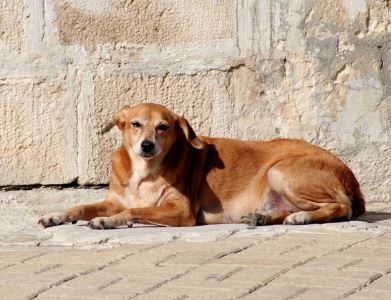
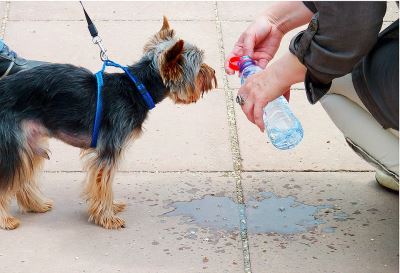
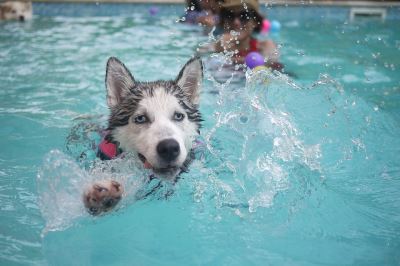
If your dog already shows signs of heatstroke, here are some treatments you can do.
1. Remove your dog from direct heat, and if possible, move him indoors to an air-conditioned room or a well-ventilated room. Restrict your dog’s activity and carry him to a cool place rather than letting him walk.
2. Allow your dog to drink cool clean water. Give him little by little water at first. If he is not interested in drinking water, room temperature beef or chicken broth is a good substitute. Do not force feed water to your dog, instead, just wet his lips and gums and tongue with water squeezed from a towel or facecloth.
3. Cool the dog with water. Be sure the water is not very cold or iced water for it can actually slow down the dog’s cooling process. Do not submerge your dog underwater for it can cause the temperature to go down quickly and may lead to other complications. Give priority to wetting his extremities, such as paws, head, and tail.
4. Contact your vet immediately. Even if your dog is responding to your treatments, it is advisable to contact your vet. Heatstroke may cause damage to your dog internally as its side effect. Undiagnosed complications may be fatal to your dog.
5. Apply rubbing alcohol to your dog’s pad on his paws. Dogs release heat on the pads of their paws, so by applying a little amount of rubbing alcohol to the pads can help draw out the heat. Be sure that the pads are uncovered and exposed to cool air. Do not use too much alcohol for it may be harmful to your dog if ingested.
Here are other tips on how to avoid heatstroke for your lovable pets.
1. Have plenty of fresh, clean drinking water for your pet all the time. If your pet will be going outside for a period of time, she should have access to shaded place, a kennel or a dog house. Encourage your dog to play in puddles of water or sprinklers to keep themselves cool and prevent themselves from overheating.
2. If your pet dog has a long coat, give him a nice comfortable trim. Do not shave his coat for it protects him from the direct heat of the sun. Shaving his coat may leave him at risk of sunburn and overheating.
3. Give your dog a walk or an exercise early in the morning or after sunset just when the temperature is still cool. Do not walk or exercise your dog on hot pavement. Not only can it burn their paws, the heat rising from the ground can also cause your pet to overheat quickly since he is very close to the ground.
4. Do not overplay or over exercise your dog regardless of the time of day for it will tire them out easily.
5. And don’t leave your dog unattended inside a parked car on a warm day. Leave him cool and well-hydrated inside his kennel or dog house or at the comfort of your own home.
6. Give your dog a nice cool bath regularly.
With all of these in mind, heatstroke can be avoided and your dog can live a happy and comfortable life during hot summer days. Just be sure to keep yourself cool and hydrated too so that you and your dog or dogs will have a fun hot summer together.
Image Sources: [1] [2] [3] [4]



